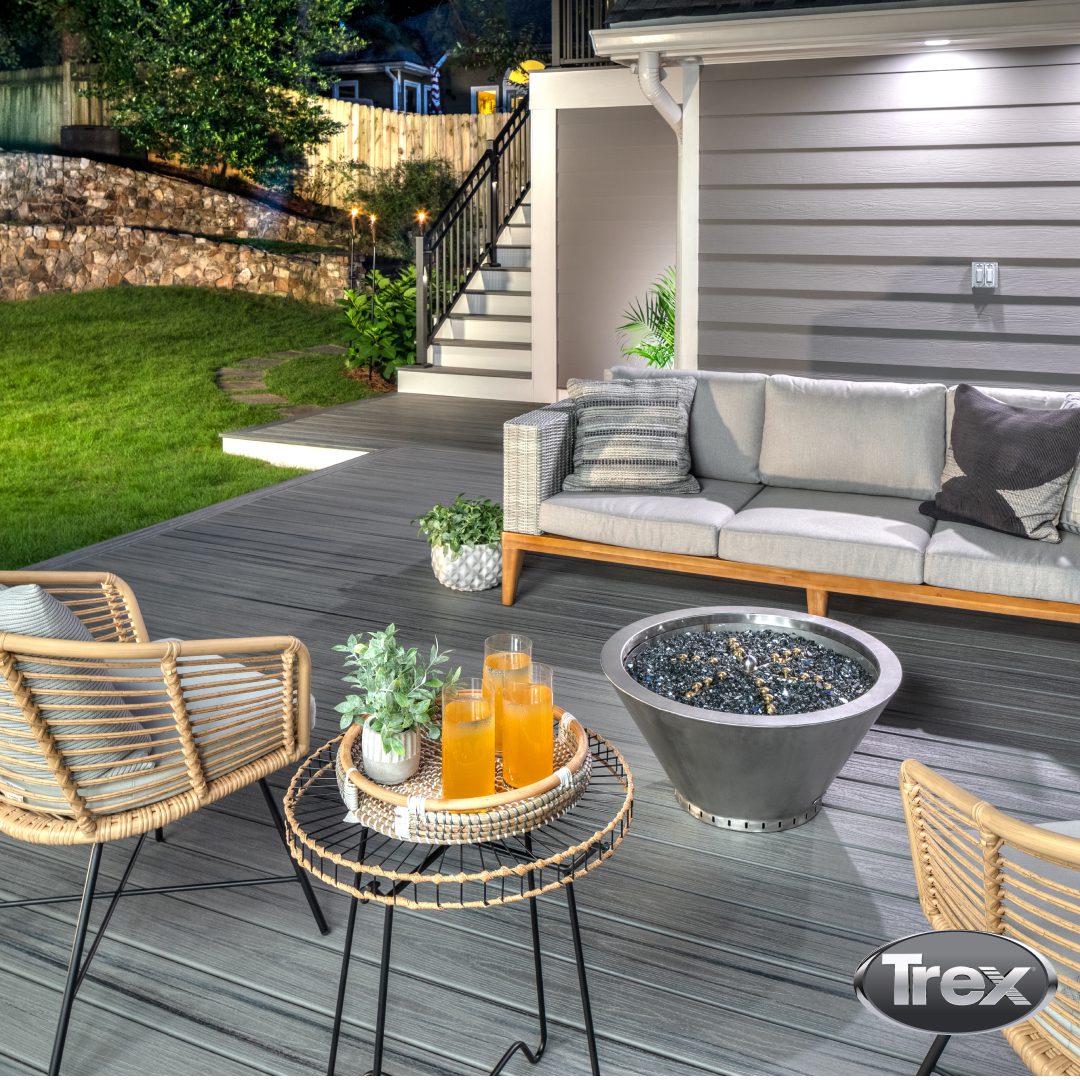When it comes to building a backyard retreat, many homeowners are drawn to the concept of a floating deck. However, the term “floating deck” often causes confusion. Let’s clear up what it means and explore why Trex composite decking is an ideal material for these types of decks.
What Is a Floating Deck?
The term “floating deck” refers to a freestanding deck that is not attached to a structure, such as a house. Unlike traditional decks that rely on a ledger board affixed to the house for structural support, floating decks are self-supported. They rest on the ground or are slightly elevated using deck blocks or other supports, making them a flexible and versatile choice for many backyard projects.
Building Code Height Limitations for Floating Decks
Building codes often impose height limitations on floating decks to ensure safety and structural stability. Typically, floating decks are required to be no more than 30 inches above the ground. Beyond this height, the deck may be subject to additional regulations, such as the need for guardrails, and might no longer qualify as a “floating” deck under local building codes.
Why Trex Composite Decking Is Perfect for Floating Decks
Floating decks are often built very close to the ground, which presents unique challenges for the decking material. Trex composite decking is a superior choice for several reasons:
- Moisture Resistance: Unlike traditional softwood decking such as pressure treated pine, Trex composite boards are highly resistant to moisture. This is crucial for floating decks that are near or in contact with the ground, where exposure to damp conditions is inevitable.
- Durability: Trex decking does not warp, rot, or splinter, even in humid or wet environments. This ensures your floating deck will remain structurally sound and visually appealing for years to come.
- Low Maintenance: With Trex, there’s no need for regular sanding, staining, or sealing. Simply clean it occasionally with soap and water to maintain its like-new appearance.
- Aesthetic Appeal: Trex offers a wide range of colors and finishes, allowing homeowners to create a stylish deck that complements their outdoor space.
Why Floating Decks Are Cheaper and Simpler for DIY Homeowners
Floating decks are an attractive option for budget-conscious DIY homeowners for several reasons:
- No Ledger Board Required: Because they are freestanding, there’s no need to attach the deck to an existing structure, eliminating the need for specialized hardware and structural reinforcements.
- Simpler Foundation: Floating decks often use precast concrete deck blocks as supports, which are easier and cheaper to install than poured concrete footings required for elevated decks.
- Lower Permit Requirements: In many areas, floating decks under a certain height may not require a building permit, saving time and money during the planning process.
Tips for Building a Trex Floating Deck
If you’re planning to build a floating deck with Trex composite decking, here are some tips to ensure a successful project:
- Prepare a Solid Base: Use gravel or compacted soil under the deck blocks to prevent shifting and ensure a stable foundation.
- Consider Ventilation: Even though Trex is resistant to moisture, providing adequate ventilation beneath the deck will enhance longevity.
- Follow Local Building Codes: Always check local regulations to ensure compliance with height and construction requirements.
- Use Trex Fascia Boards: Cover the edges of the deck frame with Trex fascia boards for a polished and professional look.
Conclusion
Floating decks are an excellent way to add functional outdoor living space without the complexity and cost of traditional attached decks. By using Trex composite decking, you can create a durable, low-maintenance, and visually stunning deck that will stand the test of time. With the added benefit of being DIY-friendly, a floating deck is a project that can transform your backyard with ease.
